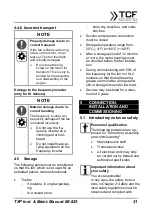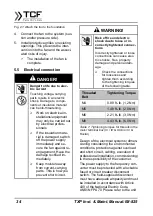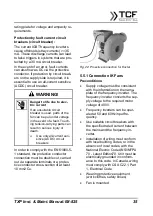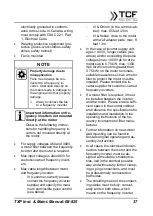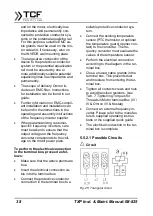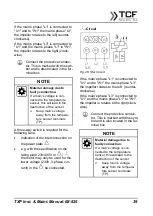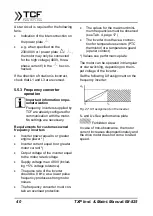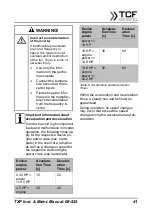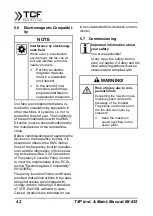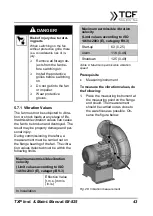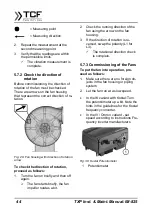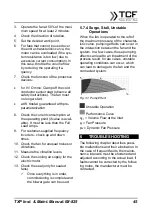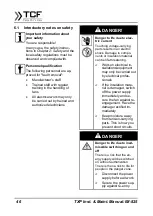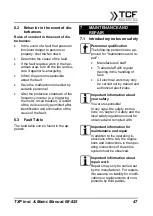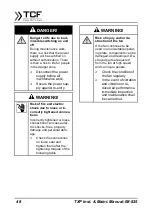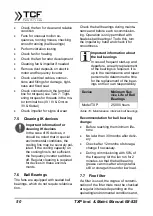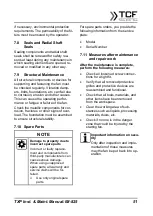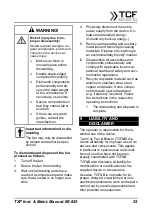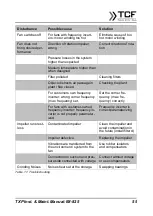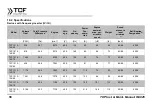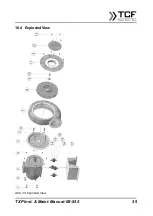
TXP Inst. & Maint. Manual: IM-825
45
3. Operate the fan at 50% of the maxi-
mum speed for at least 2 minutes.
4. Check the direction of rotation.
5. Set the desired work point.
6. For fans that cannot be used over
the entire characteristic curve, the
motor can be overloaded if the sys-
tem resistance is too low (due to
excessive current consumption). In
this case, throttle the volume flow
by reducing the operating fre-
quency.
7. Check the function of the protective
devices:
•
for IV / Omron: Clamp off the cold
conductor sensor start (observe all
safety instructions). The fan must
no longer start.
•
at IK Kostal: guaranteed with pre-
parameterization
8. Check the current consumption at
the operating point (if value is avail-
able). It must be less than the Full
Load Amps.
9. For customer-supplied frequency
inverters - check up and down
times.
10. Check the fan for unusual noises or
vibrations.
11. Measure the vibration levels.
12. Check the cooling air supply for the
electric motor.
13. Check the seal (only for sealed
fans).
Once everything is in order,
commissioning is complete and
the blower gate can be used.
5.7.4 Surge, Stall, Unstable
Operations
When the fan is operated to the left of
the maximum pressure of the character-
istic curve, pumping effects can occur in
the interaction between the fan and the
system. In a few cases, these pumping
effects can lead to an impairment of the
process result. In rare cases, unstable
operating conditions can occur, which
can lead to damage to the fan and the
connected system.
Fig. 31: Pump Effect
Unstable Operation
Performance Curve
q
V1
= Volume Flow at the Inlet
p
f
= Fan Pressure
p
fd
= Dynamic Fan Pressure
6
TROUBLESHOOTING
The following chapter describes possi-
ble malfunctions and their elimination. In
the case of frequent faults, the mainte-
nance intervals must be shortened and
adjusted according to the actual load. If
faults cannot be corrected by the follow-
ing notes, the manufacturer must be
contacted.

